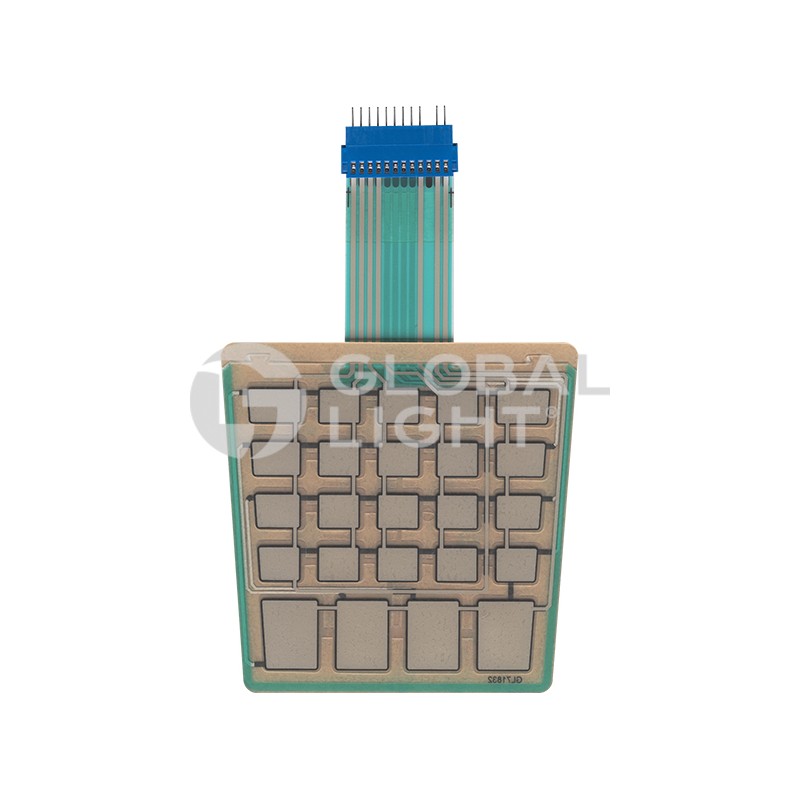Choosing the Right Membrane Switch for Your Business Needs
Choosing the Right Membrane Switch for Your Business Needs
Blog Article
Recognizing Membrane Switches Over: The Key to Trusted and resilient Controls

What Are Membrane Layer Switches?
Membrane switches are an advanced remedy in the world of interface technology, combining functionality and design perfectly. These gadgets work as a user interface between users and electronic systems, incorporating numerous parts right into a compact format. Commonly constructed from flexible, thin layers of materials, membrane buttons are designed to reply to touch, making it possible for customers to connect with equipment and digital gadgets effectively.
The primary elements of a membrane button consist of a printed circuit layer, visuals overlay, and a spacer layer that prevents unexpected activation. The graphic overlay can be customized to reflect brand name identification or individual preferences, boosting aesthetic appeals while guaranteeing usability. Membrane layer buttons are frequently used in numerous applications, including clinical tools, consumer electronics, and commercial devices, owing to their toughness and resistance to environmental factors such as dampness and dirt.
Among the key benefits of membrane buttons is their capability to stand up to wear and tear, making them excellent for high-traffic atmospheres. Additionally, they are light-weight and require marginal area, permitting ingenious styles in product advancement. In general, membrane layer switches represent a reliable and practical selection for contemporary electronic interfaces, weding technology with user-centric layout principles.
Exactly How Membrane Layer Switches Over Work
The procedure of membrane changes joints on a straightforward yet effective system that translates individual input into electronic signals. When a customer presses the button, the leading layer deforms, allowing a conductive aspect in the circuit layer to make call with an equivalent conductive pad on the bottom of the graphic overlay.
The style of membrane layer buttons can differ, but they typically include domes or responsive components to provide feedback to the user, enhancing the general experience - membrane switch. The materials utilized in membrane layer buttons, such as polyester or polycarbonate, add to their durability and resistance to environmental factors, consisting of moisture and dust. Additionally, the printed circuits are usually encapsulated, which safeguards them from deterioration gradually.
Benefits of Membrane Buttons

Additionally, membrane layer buttons are recognized for their durability. Built from durable products, they are immune to dust, moisture, and physical wear, which dramatically expands their life expectancy contrasted to standard mechanical buttons. This longevity makes them particularly ideal for high-traffic settings and applications calling for long life.
An additional substantial advantage is the simplicity of cleaning and maintenance. The smooth surface of membrane switches over decreases dirt buildup and is usually unsusceptible spills, making them ideal for setups that call for regular sanitization.
Additionally, membrane switches supply a structured profile, resulting in a thinner design that can be incorporated right into different tools without including bulk. This attribute not just improves the aesthetic allure yet also adds to an extra ergonomic product design.
Applications of Membrane Layer Switches
Versatile and user-friendly, membrane buttons discover applications across a variety of sectors, consisting of medical tools, consumer electronic devices, and industrial devices. In the medical area, these switches are integral to tools such as diagnostic tools, client monitoring systems, and mixture pumps, where reliability and simplicity of cleaning are essential. Their capability to keep and endure rough environments capability makes them ideal for such applications.

In customer electronic devices, membrane switches are made use of in items like microwaves, washing devices, and remotes - membrane switch. Their sleek style permits for intuitive interface, boosting the overall individual experience while giving sturdiness and resistance to deterioration
Industrial devices likewise gains from membrane switches, especially in control panels for equipment and automation systems. These buttons use security versus dirt and moisture, ensuring constant performance in difficult settings. Their personalized attributes permit manufacturers to customize them to details operational demands, boosting performance and capability.
Picking the Right Membrane Layer Switch Over
When choosing a membrane layer switch, it is necessary to think about different elements that influence performance and suitability for specific applications. The primary factors to consider consist of ecological conditions, tactile comments, longevity, and layout specs.
First, examine the operating environment; switches revealed to wetness, chemicals, or severe temperatures call for details materials to make certain long life and performance. Next off, assess the need for responsive comments. Depending on customer interaction, some applications might gain from a tactile feedback to verify activation, while others may favor a non-tactile style for aesthetic reasons.
Resilience is visit this web-site an additional essential element; membrane layer buttons should be developed to withstand constant use, influences, and abrasion. Guarantee the picked switch can sustain the expected lifecycle, specifically in high-usage scenarios.

Conclusion
To conclude, membrane switches over act as vital components in the layout of long lasting and reputable control systems across different sectors. Their small design, incorporated with robust construction and customizable functions, improves individual interaction while making certain durability popular environments. The adaptability of membrane switches over permits customized options that meet details operational demands, strengthening their value in contemporary innovation. As industries continue to advance, the importance of incorporating effective membrane button solutions can not be overemphasized.
Membrane changes stand for an essential aspect of contemporary interface style, mixing capability with strength in numerous applications.Membrane layer buttons are a sophisticated service in the realm of individual interface innovation, integrating performance and style effortlessly. Generally built from versatile, thin layers of materials, membrane switches are designed to respond to touch, allowing individuals to engage with equipment and electronic devices efficiently.
The design of membrane buttons can vary, but they frequently incorporate domes or responsive components to give comments to the individual, enhancing the overall experience.In verdict, membrane layer changes serve as essential parts in the layout of trustworthy and long lasting control systems throughout click this site different industries.
Report this page